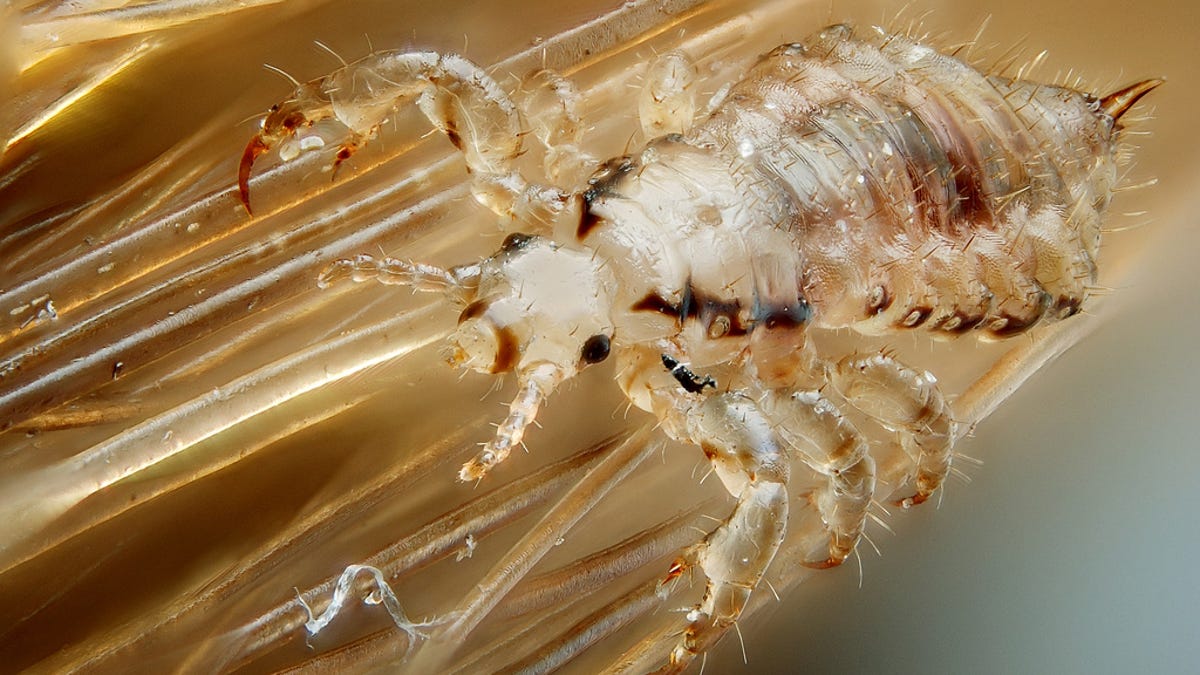Are selfies causing the spread of head lice?
A lice-removal professional claims selfies are contributing to an increase in the spread of head lice among young people, but for now at least, the link is by no means conclusive.

When people lean their heads together to pose for a selfie, they're capturing a shining moment and preserving it in pixels for posterity. They might be capturing something else too: head lice.
At least that's the claim of Marcy McQuillan, a lice-treatment expert who runs two Nitless Noggins lice-treatment centers in California. She says she's seen a dramatic uptick in the incidence of lice among young people, and it's due, she maintains, to all that head bumping for selfie snaps.
"Head lice are spread through head-to-head contact. Lice don't jump or fly, so you actually have to touch heads," McQuillan said in a press release that went out on Monday and captured headlines as fast as, well, a bunch of little critters can leap around a scalp. "Every teen I've treated, I ask about selfies, and they admit that they are taking them every day."
As that didn't sound like rigorous research to us -- and McQuillan's business would certainly stand to gain from selfie panic -- we contacted two dermatologists and another lice-treatment center to see what they had to say about the theory of selfies spreading lice. It's a theory that led to alarming headlines around the Web Monday linking selfies to "a massive lice outbreak" and "a head lice epidemic."
When asked about McQuillan's theory, Vanessa Mor, supervisor at Lice Control in Oakland, Calif., said, "That makes a lot of sense. In order to get it, you have to be in direct contact -- sitting on the same towel, sharing headphones together, or using someone else's hair curler, sharing hats, sweaters, and scarves."
Mor said she has seen a recent increase in lice in teens and young adults in her area (one local high school is in the midst of a breakout, she said), though she did not attribute the problem specifically to selfies. Lice are more common in preschool and elementary school-aged children and their close contacts, according to the Mayo Clinic and other medical sites.
Dr. Nick Celano, a resident in dermatology at the Los Angeles + USC Medical Center, is more dubious about the connection. While it might be possible for lice to travel from one head to another, the amount of time a typical selfie takes to snap wouldn't generally be prolonged enough for widespread transmission, he said.
"The way we're taught," he said of his medical schooling, "is that it takes contact for an extended period of time, and 10 seconds is not what I'd consider an extended period of time. We're in rooms with patients that have lice, and we don't really worry about getting it transmitted from one person to the other while in the room."
Celano said he couldn't pinpoint the exact amount of time it takes for lice transmission to occur, though he did say that a much more common way for lice to spread is through the sharing of combs, hats, and bedding.
Another dermatologist, Dr. Paradi Mirmirani of the Kaiser Permanente Medical Group in Vallejo, Calif., says an increase in head lice among school-age kids could be attributed to a number of factors. "There may be many other reasons for this increase, including drug resistance, decreased surveillance, or decreased awareness (it used to be that schools routinely surveyed the students -- now many schools don't even have a dedicated or full time school nurse)," she said via e-mail.
Nevertheless, neither Celano nor Mirmirani rule out the selfie theory entirely -- "It is an interesting hypothesis -- anytime there is close contact there is the possibility of transmission of lice," Mirmirani says -- so taking McQuillan's advice to keep heads separated during selfie shots might not be a bad idea -- at least while other doctors look into the claims. McQuillan also advises keeping long hair pulled back in an elastic band.
Dr. Richard J. Pollack, who teaches at the Harvard School of Public Health and runs a pest identification business called IdentifyUS, has another perspective when it comes to selfie precautions related to pests.
"This is a marketing ploy, pure and simple," he told NBC News. "Wherever these louse salons open a new branch, there always seems to be an epidemic. It's good for business."
Should a lice infestation develop, McQuillan and other lice-treatment professionals around the country offer a solution developed by Dale Clayton, a biologist at the University of Utah. Clayton had been researching lice on birds while at Oxford University in England, but when he moved his lab to Utah in 1996 he found he had a hard time keeping the lice alive.
He soon figured out that it was Utah's hot dry climate that kept the parasites from thriving. After some tinkering, he invented a sort of modified blow dryer that, the device makers claim, can eliminate 99 percent of lice and their eggs in just an hour's treatment. That device, originally known as the "Louse Buster," now goes by the fancier name AirAllé.
To treat lice at home, shampoos are available at pharmacies, along with special lice combs that remove the creatures from hair. If that treatment is unsuccessful, a dermatologist can prescribe medication.
Clayton, whose AirAllé spinoff could also benefit from a head-lice-selfie scare, told Crave he doesn't necessarily share Pollack's sentiments about the selfie theory. "Actually, head lice can move very quickly; much more quickly than people realize," he said. "Whether the selfie phenomenon is true or just good for business is speculation," he added. "There's no way to know unless we collect data to test the hypothesis. So I am less immediately skeptical than my colleague Dr. Pollack."
CNET's Leslie Katz contributed to this report.
Updated, February 25, 12:30 p.m.: to include comments from Dr. Paradi Mirmirani and Dale Clayton.

